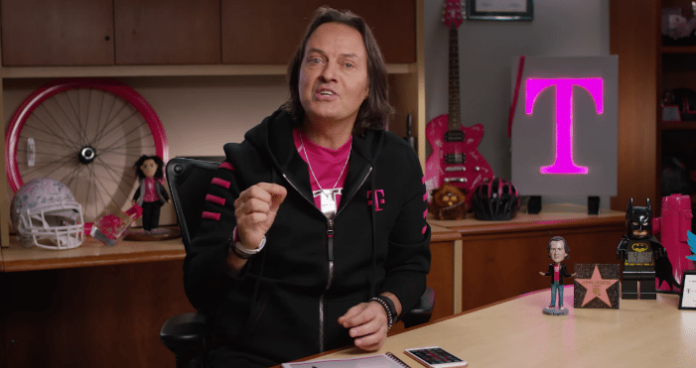In a blog post, T-Mobile CEO Legere defends Binge On service from throttling claims
T-Mobile US CEO John Legere took to the carrier’s blog in defense of its increasingly controversial Binge On video streaming platform, arguing the service is pro-consumer by providing a choice in how they watch and pay for mobile video content.
“There are groups out there confusing consumers and questioning the choices that we fight so hard to give our customers,” Legere stated. “Clearly we have very different views of how customers get to make their choices – or even if they’re allowed to have choices at all.”
Legere highlighted consumers have control over whether or not they choose to enable the Binge On service, noting those that do can stream video content now from 38 content providers over their cellular connection without touching their data bucket. The video quality using the service is constrained to 480p resolution, or as T-Mobile US calls it “DVD-like” quality.
“There are people out there saying we’re ‘throttling,’ Legere wrote. “They’re playing semantics. Binge On does not permanently slow down data nor remove customer control. Here’s the thing, mobile customers don’t always want or need giant heavy data files. So we created adaptive video technology to optimize for mobile screens and stream at a bitrate designed to stretch your data. … You get the same quality of video as watching a DVD – 480p or higher – but use only one-third as much data (or, of course, no data used when it’s a Binge On content provider).”
T-Mobile US launched the platform last November, allowing customers with data buckets of at least 3 gigabytes to have access to the free cellular video streaming service. Customers with data buckets of less than 3 GB will have data from those streaming services deducted from their data buckets, though the carrier claims the Binge On technology provides a three-times improvement in network capacity, noting consumers watching video content not part of the free package will be able to consume three times as much content for the same allotment of data.
AT&T recently said it was looking at the possibility of altering video streams across its cellular network, though the current regulatory climate made any immediate moves unlikely.
“We will watch how that plays out and follow a course of action,” said Tom Keathley, SVP for wireless network architecture and design for AT&T Technology and Operations, at this week’s AT&T Develop Summit & Hackathon.
A recent report from the Electronic Frontier Foundation found when customers used Binge On, the program topped out at just 1.5 megabits per second for all HTML5 video streams and direct downloads, but when it was disabled it topped out at nearly 5 Mbps.
The report followed up claims late last year from YouTube, which said the Binge On platform is throttling its videos and impacting quality. YouTube has so far not signed up to be part of the Binge On offering, which T-Mobile US had stated was due to not adhering to the platform’s technical requirements.
“Reducing data charges can be good for users, but it doesn’t justify throttling all video services, especially without explicit user consent,” a YouTube spokesman told The Wall Street Journal.
Legere took exception to the YouTube complaints, noting the former Google and now Alphabet subsidiary also allows customers to select the quality of video streamed via its platform.
“YouTube complained about Binge On, yet at the same time they claim they provide choice to customers on the resolution of their video,” Legere argued. “So it’s OK for them to give customers choice but not for us to give our customers a choice? Hmmm. I seriously don’t get it. Customers have more choices than before. And these guys are complaining? Who do they think they are? Do they have the right to dictate what my customers – or any wireless consumer – should or should not be able to choose for themselves? No way.”
The YouTube comments came on the heels of the Federal Communications Commission sending a letter to T-Mobile US seeking additional insight into the Binge On service. FCC Chairman Tom Wheeler initially stated he did not think the Binge On service violated current net neutrality or recently instituted Open Internet provisions, indicating the offer was “highly innovative and highly competitive.”
Advocacy group the Internet Association, which counts Google as a member, joined YouTube in questioning the T-Mobile US’ Binge On service, adding its support for the FCC inquiry.
“T-Mobile’s new ‘streaming optimization’ program appears to involve throttling of all video traffic, across all data plans, regardless of network congestion,” the group said in a statement. “The Internet Association applauds the FCC for seeking information on this practice and its potential harm on consumers and online applications and services. … The throttling practice was adopted alongside its Binge On program, which offers consumers and video services the option of removing data charges (‘zero-rating’) for video services. Reducing data charges for entire classes of applications can be legitimate and benefit consumers, so long as clear notice and choice is provided to service providers and consumers. However, a reasonably designed zero-rating program does not include the throttling of traffic for services or consumers that do not participate.”
Bored? Why not follow me on Twitter

